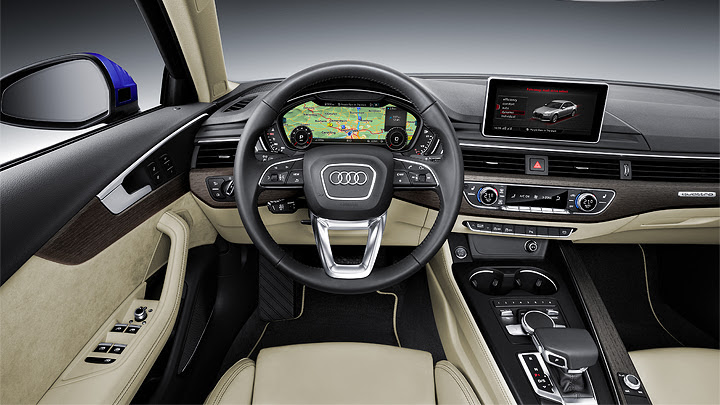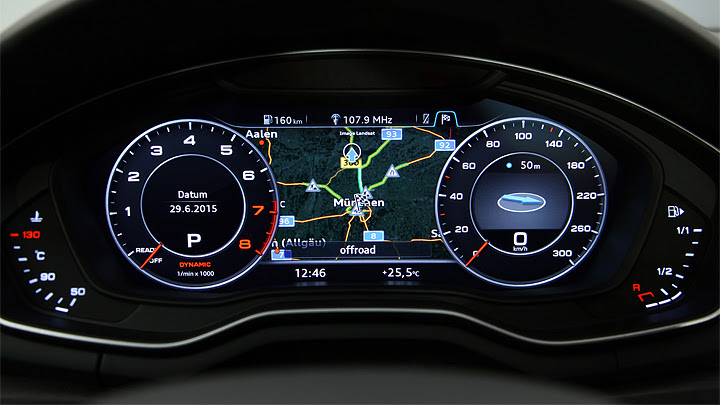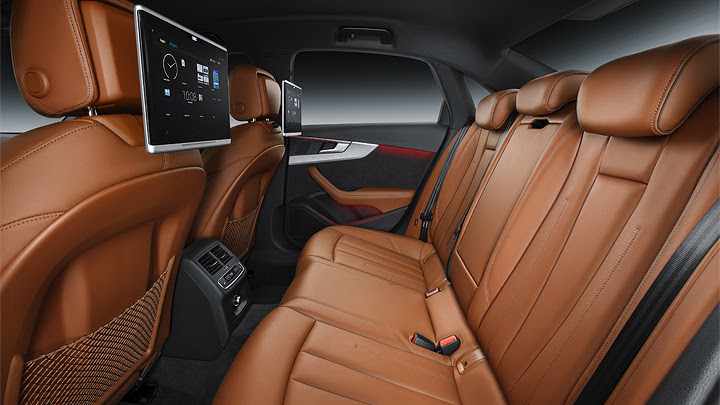
The Bavarian automaker decided to make its best-selling sedan more rational. The sporty variations were separated to found 4-Series, so 3-Series was freed to add the goal of attracting not-so-wealthy buyers with no image-related problems. Mercedes, in turn, created a whole lineup for that public, so C-Class could remain looking upwards. And this is precisely what it did: its current generation may lose to S-Class in sophistication, but definitely not in charm. Leaving Germany, S60 managed to get people that wouldn’t be caught dead in a Volvo years earlier. Giulia, in turn, is the first step for Alfa Romeo to get back the prestige of yore. Everything seems diverse indeed, right? Well, Audi managed to make that even better: the new A4 follows yet another train of thought.
Instead of upwards or downwards, this sedan looked at the mirror. Without getting any closer to A3 Sedan or to A6, it combined the typical amount of evolution expected from all-new projects to what can be called a tribute to itself. The most obvious interpretation of that is the external design, of course: lights and grille became even more angular up front, the lower crease at the sides is bigger and concave, and the rear features sleeker, more aggressive lights, more creases to tailgate and bumper, and some blackened parts on the latter. When it comes to this aspect, investing in consistency is always good, specially for luxury companies, but it’s certainly difficult to overlook the fact that an entirely new generation resembles so much a modest facelift.










Normally, Audis’ redemption comes when the technical part is mentioned, but this is only partially true for the new A4. This vehicle is underpinned by MLB Evo, an updated version of the longitudinal platform that debuted with A5 back in 2007. However, this structure brought a set of lightweight materials, in order to lose up to 265 pounds when compared to its predecessor; more resistant construction, and a long array of electronic systems of varied purposes. The first group of improvements uses components such as steering, transmission and structure made of magnesium, while the suspension features a large amount of aluminum. The second group can be described by saying this model can have as many gadgets as the new generation of the full-size Q7.
Where the new A4 can really surprise you is the cabin. There are several rational aspects with which Audi worked just as well, but the style really needs a separate mention. Instead of pretty much repeating the elements used by its other products, the company was inspired by itself once again. Those full-width air vents remind of the second 100, which was also named 5000. And the climate controls were designed to remind old aftermarket car-stereo systems. The rest of car, on the other hand, relies on the automaker’s recipe: horizontal shapes combining black, silver and a third color and creating a quite sporty look. The touchscreen on top of the dashboard is fixed, while A3 and A6 use retractile ones. But all the expected functions are there.










Speaking of the cabin, Audi always makes it interesting to talk about equipments. Head and tail lights, for instance, can have their lamps (xenon at the former) replaced by LEDs; the list of electronic safety systems probably includes any name of which you may think; and the conventional instruments in front of the steering wheel can be replaced by that huge TFT screen that debuted in the current TT. It’s never good to know that items like these are always offered optionally, but this has become the standard of this category. At least, even those who take the basic A4 will enjoy a bigger cabin: Audi claims those who use the rear seat will have more room than at the previous car even when the front ones are way back in their travel.
As far as engines are concerned, there will be three TFSI and four TDI, with power ranging from 150 hp to 272 hp – you need to exclude S and RS models for now. Fuel consumption, in turn, dropped by up to 21%, reaching 27 kpl in the case of the 2.0 TDI (95 g/km of CO2). Switching to gasoline, the remarkable engine is the 2.0 TFSI ultra, which makes 20.8 kpl (and emits 109 g/km). Then again, these are just the regular variations: frugal buyers will have the g-tron, gas-fueled version, while sporty ones will be able to buy the aforementioned duo in a year or more. The latter two are expected to use V6s, with different turbo counts. The new A4 will be Audi’s most important release at this year’s Frankfurt Auto Show.